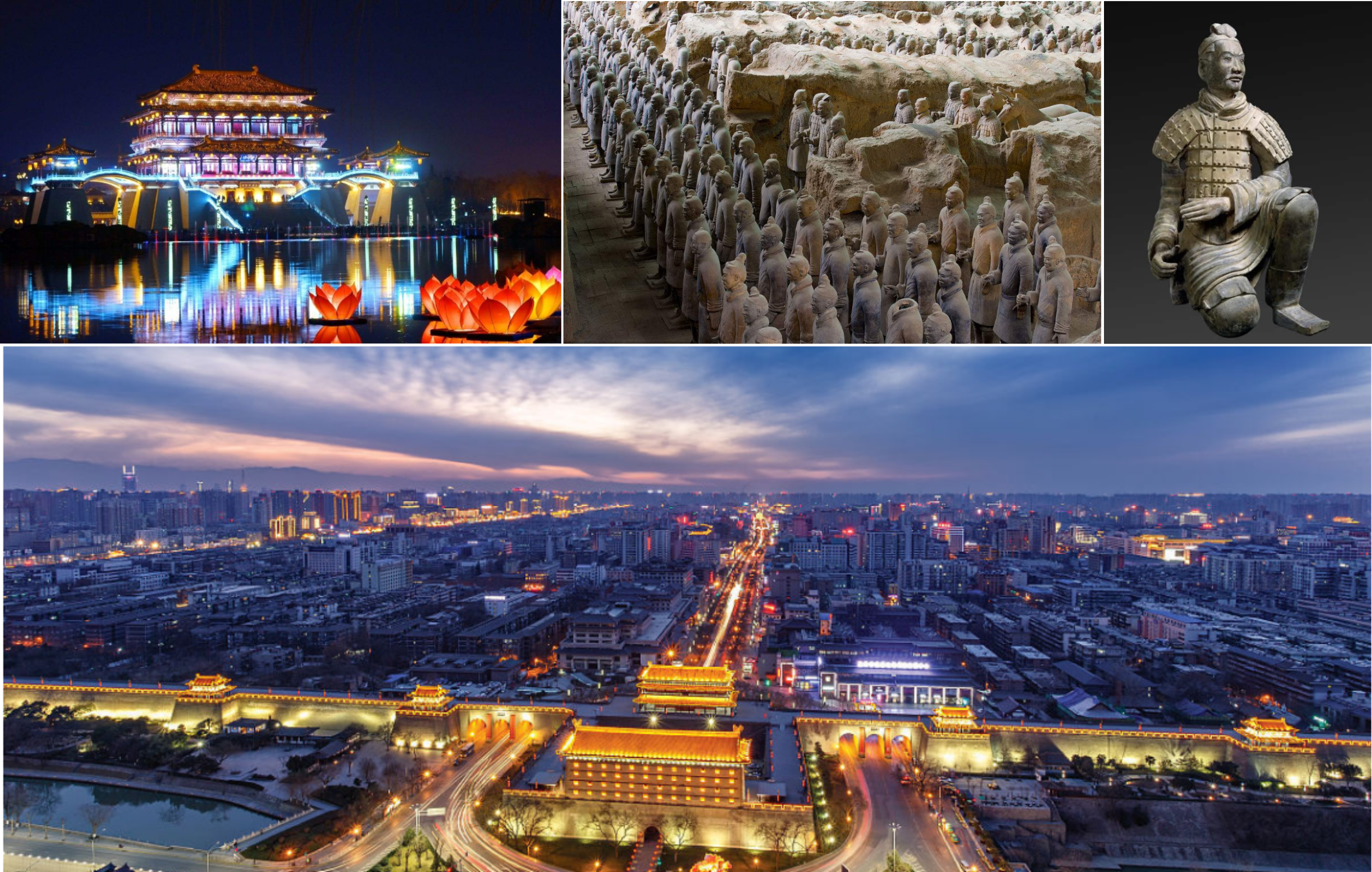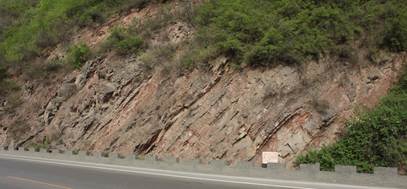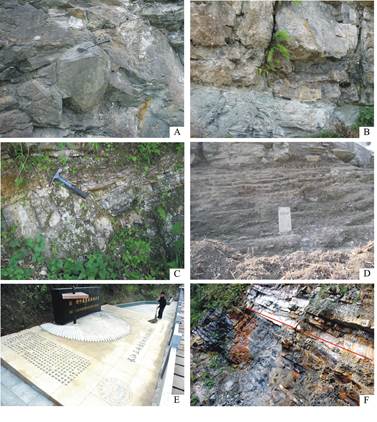





International Symposium on Deep-time Environmental & Climatic Extremes and Biotic Responses
22-24 May, 2018, Wuhan, China
Second circular
1. Invitation
IGCP630 and China University of Geosciences (Wuhan) invite you to participate in the International Symposium on Deep-time Environmental & Climatic Extremes and Biotic Responses in Wuhan, China, a beautiful city in central China. The Symposium will consist of a three-day meeting and be complemented by two field excursions before and one after the symposium, respectively to examine excellent marine and non-marine Permian–Triassic boundary sections, marine Lower-Middle Triassic successions as well as other major well-recorded extreme climate, environmental & biotic events (i.e., Snowball Earth event, O/S mass extinction, G/L mass extinction) in China.
The symposium will consist of presentations and posters that summarize main results that IGCP630 members and other researchers have obtained and focus on the causes and consequences of Permian–Triassic events and ecosystem recovery, as well as extreme climatic, environmental & biotic events during other critical periods in the geological past. Field excursions include: a three-day field excursion before the symposium to the well-studied Chaohu section, Anhui Province, examining the PTB and Lower Triassic successions and events (including well-known marine reptile fossil lagerstätten), and a four-day excursion before the symposium to Xian City and adjacent areas to investigate a non-marine Triassic succession recording ecosystem collapse and rebuilding on land, and a five-day excursion after the symposium to the classic long section recording the Ediacaran-Jurassic period of earth history in the beautiful Three Georges area, western Hubei Province.
Venue
The Symposium venue: China University of Geosciences (Wuhan) campus, China.
The Great Wuhan City is one of the most popular tourist destinations in China. Geographically, Wuhan is the heart of China, famous for spectacular riversides of the Yangtze River and many beautiful lakes within the city. It is also one of the most important industry, education and culture capitals in China. The city accommodates the largest population of undergraduate and graduate students (up to one million) in China, generating the hope for the future of this country.
The State Key Laboratory of Biogeology & Environmental Geology, and State Key Laboratory of Geological Process & Resource Geology, China University of Geosciences, the major sponsors of this symposium, are two of 40 state-level geoscience research centres in China. In these two centres more than 30 staff are working actively on the P/Tr mass extinction & Triassic recovery, and relevant topics. They are also training about 80 postgraduate students working on deep-time extreme events and relevant topics every year. China also records the most complete marine late Neoproterozoic to Triassic successions and terrestrial Triassic to Cenozoic strata as well as many important sites for studies on the P-Tr and other mass extinctions and climatic/environmental extremes in the world. Thus, the Symposium offers you unique opportunity to develop your collaborations with Chinese partners and take advantage of excellent geological record to probe into the deep of the P-Tr crisis as well as extreme climate/environment events in other critical periods.
2. Sponsors & Organizers
Sponsors
IGCP630: Permian-Triassic Climatic and Environmental Extremes
United Nations Educational, Scientific & Culture Organization
International Union of Geological Sciences
International Geoscience Program (IGCP) Headquarter Office
IGCP China Committee
National Natural Science Foundation of China
Palaeontological Society of China
Anhui Geological Museum, Hefei
China University of Geosciences (Wuhan)
Organizer
State Key Laboratory of Biogeology & Environmental Geology, State Key Laboratory of Geological Process and Resource Geology, China University of Geosciences (Wuhan)
3. Local Organising Committee
Zhong-Qiang Chen, Jinnan Tong, Laishi Zhao, Xulong Lai, Huazhou Yao, Shucheng Xie, Changqun Cao, Jun Liu, Shixue Hu, Dayong Jiang, Jianxin Yao, Jianxin Yu, Genming Luo, Haishui Jiang, Haijun Song, Yadong Sun, Huasheng Shan, Hao Yang, Daoliang Chu, Lei Zhang, Jun Shen
Convenors: Zhong-Qiang Chen (zhong.qiang.chen@cug.edu.cn), CUG
Jinnan Tong (jntong@cug.edu.cn), CUG
Laishi Zhao (lszhao@cug.edu.cn), CUG
General Secretary: Hao Yang (2003yanghao@163.com), CUG
Registration Administrator:
Jun Hu (hujuncug@163.com), CUG
Scientific Programme Coordinators:
Thomas Algeo, University of Cincinnati, USA
Zhong-Qiang Chen, China University of Geosciences
Jinnan Tong, China University of Geosciences
Field Excursion Coordinators:
Genming Luo (logming@163.com), CUG, Wuhan
Daoliang Chu (daoliang_chu@163.com), CUG, Wuhan
Lei Zhang (zhanglei_cug@sina.com), CUG, Wuhan
4. International Advisory Committee
Mark Hounslow, University of Lancaster, UK
Shuzhong Shen, Nanjing Institute of Geology and Palaeontology, CAS, China
Hongfu Yin, China University of Geosciences (Wuhan), China
Chengshan Wang, China University of Geosciences (Beijing), China
Mike Benton, Bristol University, UK
David Bottjer, University of South California, USA
Zou Caineng, Research Institute of Petroleum Exploration and Development, PetroChina, China
Zengqian Hou, Natural Science Foundation of China, China
Yanan Shen, China University of Technology & Sciences, China
Charles Henderson, University of Calgary, Canada
Aymon Baud, Université de Lausanne, Switzerland
Paul Wignall, Leeds University, UK
Isabel Montanez, University of California Davis, USA
Thomas Algeo, University of Cincinnati, USA
Guang Shi, Deakin University, Australia
James Ogg, Purdue University, USA
Wolfram Karschner, University of Oslo, Norway
Steve Grasby, Geological Survey of Canada, Canada
Sylvie Crasquin, Université Pierre et Marie Curie, France
Peter Roopnarine, California Academy of Sciences, USA
Gregory Retallack, University of Oregon, USA
Steven Kershaw, Brunel University, UK
Roger Summons, Massachusetts Institute of Technology, USA
Kunio Kaiho, Tohoku University, Japan
Margaret Fraiser, University of Wisconsin-Milwaukee, USA
Michael Joachimski, University of Erlangen-Nuremberg, Germany
Yupeng Yao, Natural Science Foundation of China, China
Yu Liu, Natural Science Foundation of China, China
Jianguo Ren, Natural Science Foundation of China, China
Yukio Isozaki, University of Tokyo, Japan
Arne Winguth, University of Texas at Arlington, USA
Kliti Grice, Curtin University, Australia
Jonathan Payne, Stanford University, USA
George Stanley, University of Montana, USA
Jean Broute, University of Paris VI, Paris
5. General Schedule and Scientific Program
May 21: Afternoon (2:30 pm to 6:30 pm): registration (at CUG International Conference Centre)
May 22-24: Opening session, plenary session and topic sessions
The 3-day symposium will be scheduled. More than 10 active, world-renown Keynote speakers will be invited to summarize the main results of the ongoing studies on the P-Tr mass extinction and recovery as well as major extreme events during other critical periods of Earth history, and to outline the perspectives of these topics as well. Oral and poster presentations on any topics concerning deep-time extreme climate, environment and bio-events are also welcome! The talks will be followed by open discussion shaping the future studies on deep-time mass extinction, recovery and extreme climatic changes. Major symposium programs include:
● Plenary session (major extinctions and life evolution),
● Permian and P-Tr crisis,
● Triassic recovery and other events,
● Biotic and environmental events during other critical periods,
● General Palaeontology and Stratigraphy
6. Field Excursions
Two pre-Symposium field excursions and one Post-Symposium are scheduled (see Appendix for more details).
7. Social Programme
An icebreaker party will take place in the evening of the 21st of May 2018 at CUG, Wuhan. A conference dinner will be offered. The city of Wuhan and the surrounding areas have numerous interesting places to visit, including hot springs, mountains, and riversides.
8. Call for Abstracts
Authors are invited to submit abstracts of one printed page by e-mail attachment (preferred). The deadline for abstract submission is:
April 30, 2018
Summit proceedings may be published in one thematic issue in Global and Planetary Change or other important international journals.
The official language of the meeting is English. A detailed guide for submission of abstracts will be available on the website of the meeting.
9. Registration
Registration deadline: April 30, 2018
Registration form is attached. Please fill in the registration form and send it back to us
Registration Fees
An approximate estimate of the registration fees for the Symposium is:
Full/Student participant:1900RMB/300 before April 30, 2018; 2200RMB/350 USD after April 30.
Accompanying member: 1000RMB/150 USD
1. Pre-Symposium field trip (3 days) to Chaohu: 1300RMB/200 USD before April 30, 2018.
2. Pre-Symposium field trip (4 days) to Xi’an City and other areas: 3200RMB/500 USD before April 30, 2018.
3. Post-Symposium field trip (5 days) to Three Gorge area: 3200RMB/500 USD before April 30, 2018.
Full payment can be done online at http://event.31huiyi.com/1325746501
which will be active for payment after April 10, 2018
10. Funding
IGCP 630 has travel funds available for all participants to apply for sponsorship attending this event.
11. Accommodation
CUG Guest Hotel (near symposium venue) is a 3- or 4-star hotel and provides 50-60 rooms (room rate: about 50-60 USD per night). There are many hotels nearby the Optical Valley area, Wuhan City (about 2-3 km away from CUG campus) having room rates ranging from 60-200 USD per night. If you hope book CUG Guest hotel and others, we can help make reservations, please contact Jun Hu (hujuncug@163.com) or Hao Yang (2003yanghao@163.com)
12. Contact us
Secretariat and correspondence:
State Key Laboratory of Biogeology and Environmental Geology, China University of Geosciences
Hao Yang: e-mail: 2003yanghao@163.com
Jun Hu: e-mail: hujuncug@163.com
or, Zhong-Qiang Chen (zhong.qiang.chen@cug.edu.cn)
Tel: +86 27 67881036
Fax: +86 27 67881052
13. Key dates
Registration/Abstract deadline: April 30, 2018.
14. Website:
http://igcp630meeting.cug.edu.cn will be accessible after April 10, 2018
Appendix: Field Excursion schedules
1. Pre-Symposium field excursion to Chaohu area, Anhui Province (3 days; May 19–21, 2018): The Chaohu area records the complete Carboniferous to Middle Triassic succession and is also the ideal place to see the consolidation between the South China and North China Blocks during the Middle-Late Triassic. This 3-day field trip aims to examine (1) marine uppermost Permian to topmost Lower Triassic successions, (2) the P-Tr, I-O and S-S boundary successions, and (3) exceptionally preserved Chaohu (Spathian) marine vertebrate Fossil lagerstätten.
Leaders: Lei Zhang (zhanglei_cug@sina.com), CUG; Jiandong Huang: Anhui Geological Museum.
Field Excursion Schedule:
May 19: morning, Wuhan via Hefei to Chaohu by coach bus; afternoon, visiting the West Pingdingshan section (Changhsingian to lower Spathian), stay overnight at Chaohu city;
May 20: morning, visiting western Majiashan section (continuous P-Tr boundary), then, rest of day, moving to the classic Majiashan section, investigating the complete the Griesbachian to Anisian successions with emphasis on marine vertebrate fossil horizons; optionally, seeing some frontier deposits of the North China block; stay overnight at Chaohu District;
May 21: morning, visiting the Anhui Geological Museum in Hefei City; afternoon, going back to Wuhan by coach.
Note: Participants need to arrive in Wuhan on May 18, 2018. The registration fee (200 USD) for this excursion covers transportation between Wuhan and Chaohu and meals and accommodations for May 19-21 (excluding accommodation for 21st of May). This excursion does not provide accommodations for 18th and 21st of May in Wuhan. This excursion provides shared rooms for participants. If you hope have single room, please contact field excursion leader and pay the extra fee (60 USD, per night).
2. Pre-Symposium field excursion to Xi’an City and adjacent Tongchuan areas in Shaanxi Province (4 days; May 18–21, 2018): Sightseeing in Xi’an City, one of the most well-known Chinese ancient capitals, and moving to Tongchuan area, investigating (1) terrestrial uppermost Permian to Upper Triassic successions, (2) collapse and re-building of terrestrial ecosystems over the P-Tr transition, and (3) extreme climate changes (indicated by well-preserved paleosols).
Leader: Daoliang Chu (CUG) (daoliang_chu@163.com)
Field Excursion Schedule:
May 18: morning, assembling in Xi’an city, then moving to Tongchuan area by coach; afternoon, visiting the Qishuihe section to examine the P-Tr boundary succession, stay overnight at Tongchuan city;
May 19: whole day, visiting the Triassic succession in the Qishuihe section; stay overnight at Tongchuan city;
May 20: morning, moving to Xi’an City, visiting some famous sightseeing spots within the city; participants may travel around the city by themselves, but need to stay overnight at the same hotel; stay overnight at Xi’an City;
May 21: morning, visiting the Northwest University Museum to inspect exceptionally preserved collections of the Chengjiang Fauna (early Cambrian); afternoon: going back to Wuhan by high-speed train (about 4-5 hours), stay overnight in Wuhan.
Note: Participants need to arrive in Xian City on May 17, 2018. Please make your own travel plan. The registration fee (500 USD) for this excursion includes all meals and accommodations from 18th of May to 20th of May, and meals and ticket for high-speed train from Xi’an to Wuhan on 21st of May; This excursion does not provide accommodations for 17th and 21st of May in Xi’an City and Wuhan City, respectively. This excursion offers the shared rooms for participants during the trip. If you hope have single room, please contact field excursion leader and pay the extra fee (60 USD, per night) for single room.
|
|
|
 |
The city of Xi'an (Capital of Shaanxi province) was the first Chinese city to open up its doors to the Ancient world during the Tang dynasty. As one of the most important cities in Chinese history, Xi'an was the capital for eleven dynasties. This city was a world leader in culture and trade and played a vital role in bridging the gap between east and west during the Tang Dynasty. Xi'an is also renowned for being the eastern terminus of the Silk Road and for the location of the Terracotta Army of Qin Dynasty. The city has more than 3,000 years of history. It was called Chang'an in ancient times. Aside from being a major tourist destination and historical city, today Xi'an has become an important cultural, industrial and educational center of the central-northwest region, with facilities for research and development and China's space exploration program. Xi'an is situated in the center of the Guanzhong Plains, surrounded by Mountains in the south and the Wei River in the north. More information is available in the following link:
|
|
|
 |
The Qishuihe section is situated near the Tongchuan City, 100 km from Xi’an City (35.209°N, 109.056°E). An almost continuous outcrop records the Late Permian to Middle Triassic strata in the Qishuihe section. The P-Tr redbed succession is composed of the Sunjiagou, Liujiagou and Heshanggou formations. The Sunjiagou Formation consists of fine-grained sandstones, reddish siltstones and mudstones, containing Paleozoic-type plants and pareiasaurs. In addition, the Sunjiagou Formation contains marine bivalves and brachiopods in the Baoji and Tongchuan areas, which might indicate the occurrence of a transgression. Current researches suggest that the upper part of Sunjiagou Formation corresponds to the P-Tr transitional interval. The overlying Liujiagou Formation comprises reddish and brown-reddish fine-grained sandstones interbeded with siltstones and conglomerates. The Heshanggou Formation is composed mainly of purple siltstones and mudstones with diverse trace fossils.
3 Post-Symposium field excursion to Three Gorge area (5 days; May 25–29, 2018): Sedimentary succession from Ediacaran to Triassic with emphasis on the Permian/Triassic boundary up to Spathian successions in Three Gorge area, western Hubei, aiming to examine the Ediacaran Snowball Earth event, Precambrian-Cambrian event, O/S mass extinction, G/L mass extinction, P/Tr mass extinction, and Triassic recovery.
Leader: Genming Luo: logming@163.com, (CUG):
Field Excursion Schedule:
May 25: early morning, departing Wuhan to Yichang city by bullet train, then moving to Zigui county by coach bus; afternoon, visiting the Neoproterozoic succession there, stay overnight at CUG field geologic camp at Zigui County town.
May 26: whole day, examining Lower Palaeozoic successions from Cambrian to Silurian, including the GSSP sections for the base of the Hirnantian in Wangjiawan and the base of the Dapingian in Huanghuaxiang; stay overnight at Zigui county town.
May 27: morning, investigating the Upper Paleozoic successions: Carboniferous, Permian succession; afternoon: touring in the Three-Gorge area (sightseeing at the Great Yangtze River Dam, optional); stay overnight at Zigui county town;
May 28: whole day, investigating the Upper Permian-Middle Triassic successions including the G/L boundary section and Daxiakou deep-sea facies PTB section, stay overnight at Zigui county town;
May 29: morning, moving to Yichang City High-speed Train Station by coach, then, moving back to Wuhan by bullet train.

Fig. 1 Traffic map showing locations of the Yichang area and visiting sections. 1: Precambrian to Lower Cambrian sequence in the Zigui area; 2. Lower Palaeozoic sequence, from Cambrian to Silurian, in Huanghuaxiang area; 3. Upper Permian to Middle Triassic sequence in Xiakou Town.

Figure 2. Selected field photos showing the late Neoproterozoic successions in the Three Gorge area. A, Drop stone in the Nantuo tillite at the Huajipo section. B, The Nantuo tillite and Doushantuo Cap Carbonate at the Huajipo section. C, The Dengying and Yanjiahe Formations at the Yanjiahe section. D, GSSP section for the base of the Dapingian. E, GSSP section for the base of the Hirnantian. F, Deep-sea P-Tr boundary beds at the Daxiakou section. The red line represents the P-Tr boundary.
Note: The registration fee (500 USD) for this excursion includes all meals and accommodations from 25th of May to 29th of May (excluding accommodation for 29th of May) as well as transportations between Wuhan and Yichang/Zigui. This excursion does not provide accommodation for 29th of May in Wuhan City. This excursion provides gate ticket for sightseeing at Great Dam of Three Gorge area, and also offers the shared rooms for participants during the trip. If you hope have single room, please contact field excursion leader and pay the extra fee (60 USD, per night). Please make your own travel plan after arriving in Wuhan on 29th of May (estimating to arrive in Wuhan before 13:00 pm on 29th of May).